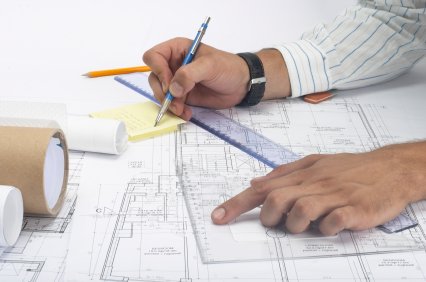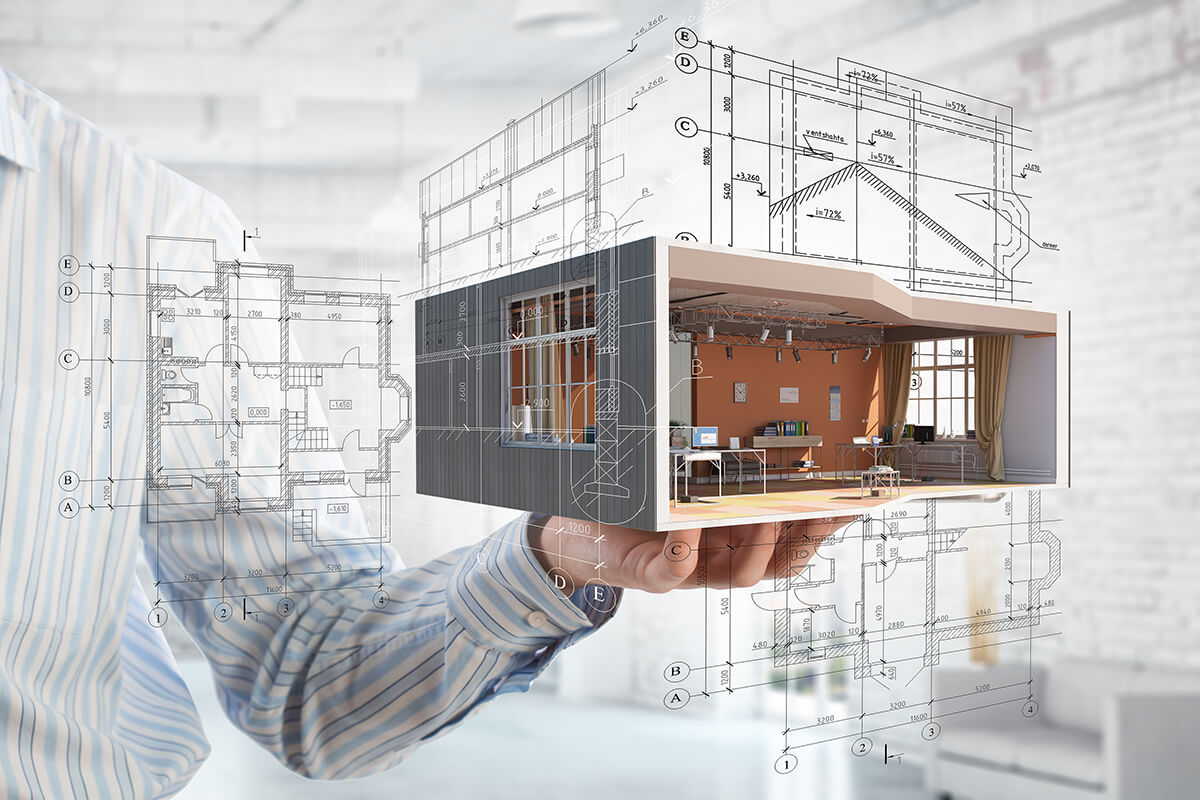Architect Design Movements to Watch in the Coming Year
Architect Design Movements to Watch in the Coming Year
Blog Article
Recognizing the Diverse Profession Paths Available for Aspiring Architect
As an ambitious Architect, you have a world of job paths waiting for you. Each course uses one-of-a-kind obstacles and opportunities to use your creative thinking and technical knowledge. Whether you're attracted to standard design or the subtleties of sustainable style, there's a niche that lines up with your passions. Comprehending these varied options can form your professional journey, but which instructions will you select to discover initially?
Standard Architecture: Designing Buildings and Frameworks
Conventional design concentrates on developing buildings and structures that blend performance with visual appeal. As you discover this field, you'll value the detailed balance in between type and purpose. You'll find out to attract ideas from historic styles, integrating elements like balance, materials, and craftsmanship. Your designs can mirror social heritage, showcasing neighborhood traditions while meeting modern requirements.
You'll establish abilities in preparing, model-making, and website evaluation, enabling you to visualize and interact your ideas successfully. Involving with customers, you'll require to comprehend their vision and translate it right into practical layouts.
In addition, developing codes and sustainability techniques are important in your job, guaranteeing your frameworks are environmentally pleasant and safe. As you expand in your profession, you'll discover opportunities in domestic, industrial, and even remediation projects, each offering distinct challenges. Welcoming traditional style paves the method for a satisfying profession that admires the past while shaping the future.
Urban Planning: Forming Neighborhoods and Public Spaces
As a hopeful Architect, you can play a crucial role as an urban coordinator, transforming exactly how communities engage and work. By employing community engagement methods, you'll ensure that residents have a voice fit their environment. And also, incorporating sustainable layout principles will certainly help develop areas that not just satisfy today's demands yet additionally safeguard the future.
Function of Urban Planners
While several may think about designers as the single enthusiasts behind buildings, city planners play an important role fit the broader landscape of neighborhoods and public rooms. They analyze land usage, zoning laws, and community needs to create sustainable environments that enhance lifestyle. By collaborating with numerous stakeholders, you'll assist develop parks, transport systems, and suburbs that promote social communication and accessibility. Urban coordinators additionally concentrate on environmental factors to consider, making certain that growths incorporate environment-friendly spaces and assistance biodiversity. Your expertise in spatial layout and community characteristics allows you to visualize future development while maintaining cultural heritage. In this critical duty, you'll straight affect just how people experience their surroundings, making every task a possibility for favorable modification.
Community Interaction Techniques
Reliable community engagement approaches are important for city coordinators to assure that the voices of homeowners are heard and valued in the planning procedure. To promote significant dialogue, you need to focus on open online forums and workshops where community participants can express their ideas and concerns. By actively incorporating and listening feedback, you'll create rooms that show the neighborhood's needs, ultimately leading to more effective and sustainable city settings.
Lasting Layout Principles
When designing urban spaces, integrating lasting layout principles is important for developing settings that flourish both ecologically and socially. You should start by concentrating on power performance, using products that minimize waste and promote recycling. Think about incorporating eco-friendly spaces, like parks and gardens, to boost biodiversity and enhance air quality. Promoting walkability and public transport can reduce reliance on cars and trucks, promoting a much healthier neighborhood.
Designing with water conservation in mind is also vital-- assume concerning rainfall yards and absorptive surfaces to handle stormwater. Involving area members throughout the preparation procedure warranties that the areas you produce satisfy their requirements and encourage social interaction. By embracing these principles, you'll add to dynamic, sustainable urban landscapes that profit every person.

Landscape Design: Creating Sustainable Outside Environments
As you explore landscape style, you'll find vital layout principles that develop useful and stunning outdoor rooms. Sustainable methods play a vital role in guaranteeing these atmospheres thrive while reducing environmental influence. And also, you'll find a selection of profession chances that allow you to make a genuine difference in how individuals communicate with nature.
Layout Principles in Landscape
Understanding layout principles in landscape architecture is vital for producing sustainable outside settings that harmonize with nature. You'll need to ponder components like scale, proportion, and equilibrium to guarantee your styles really feel natural and welcoming. Incorporating native plants not just boosts biodiversity yet additionally decreases water usage, making your landscape resilient. Think of the flow of room and how people communicate with it; pathways and seating locations should welcome exploration and relaxation. Additionally, focus on seasonal modifications, making with materials that complement the environments year-round (Architect). By focusing on sustainability and visual appeals, you can develop outdoor areas that enhance the neighborhood and promote well-being. Accepting these principles will establish a strong foundation for your job in landscape style.
Lasting Practices Introduction
Lasting techniques in landscape design not only focus on aesthetics however also focus on ecological wellness and resource conservation. By incorporating indigenous plants, you enhance biodiversity and minimize the requirement for chemical plant foods and chemicals. Executing efficient irrigation systems aids save water and reduces runoff, safeguarding close-by communities. You can develop rooms that promote soil wellness, such as exercising and using organic products permaculture concepts. In addition, incorporating environment-friendly infrastructure, like rain gardens and porous pavements, help in stormwater administration and decreases city warm. When you develop outdoor atmospheres with sustainability in mind, you contribute to a healthier planet and provide areas that promote neighborhood connection. Ultimately, these practices ensure your layouts profit both people and the environment for many years to come.
Profession Opportunities Exploration
With a strong structure in sustainable techniques, landscape style offers a range of profession paths that enable you to make a meaningful influence on the atmosphere. Urban organizers often team up with landscape architects to create green rooms in city setups, improving city livability. If you're enthusiastic about education, consider ending up being a landscape architecture educator, motivating future generations.
Sustainable Layout: Concentrating On Eco-Friendly Practices
As you explore your career in architecture, welcoming environment-friendly practices can establish you apart in an affordable field. Lasting style focuses on producing structures that decrease ecological influence while enhancing resident health. By incorporating eco-friendly products, energy-efficient systems, and lasting building techniques, you'll add to a greener future.
Start by getting understanding of eco-friendly accreditations like LEED or BREEAM, which can strengthen your qualifications. Consider how all-natural light, ventilation, and thermal performance can enhance style. Work together with engineers and ecological consultants to introduce solutions that minimize waste and save sources.
Do not forget the significance of neighborhood participation-- appealing neighborhood stakeholders can inspire layouts that balance with the environment. As clients increasingly prioritize sustainability, your experience in environmentally friendly techniques will not only bring in tasks however likewise fulfill your passion for responsible design. Welcome this crucial facet of the career, and see your profession thrive.
Historical Conservation: Safeguarding and Recovering Cultural Heritage
While you start on your architectural trip, think about the essential role of historic preservation in keeping our cultural heritage. This field concentrates on the defense and repair of substantial structures, websites, and structures that tell the tales of our past. By participating in historical preservation, you'll assist guard the architectural heritage that forms community identity.
As a historic conservation Architect, you'll assess historical importance and evaluate the condition of structures. You'll work check these guys out carefully with preservationists and historians to assure genuine remediation strategies are utilized. This career path enables you to mix imagination with study, allowing you to create solutions that respect original products and craftsmanship.
Your job not just adds to sustainability by reusing existing buildings yet likewise cultivates a sense of satisfaction within areas. Welcoming this path will aid you become a guardian of background, preserving the stories and aesthetics that enrich our lives.
Interior Design: Enhancing Indoor Spaces
Historic conservation and indoor style both share a dedication to improving the built environment, yet they concentrate on various facets. While historical preservation highlights preserving a structure's cultural and historic value, interior design nos in on enhancing interior spaces for performance and aesthetic appeals.
As an ambitious Architect, you'll find that indoor style permits you to mix creativity with technical abilities. You'll make spaces that not only look excellent yet also advertise convenience and performance. This area entails understanding just how light, color, and materials interact within a space, impacting mood and functionality.
You'll work with various projects, from household homes to industrial workplaces, ensuring that each setting satisfies the requirements of its passengers. By focusing on individual experience, you can change interiors into practical Full Report and motivating spaces, making a significant influence on how individuals connect with their environments. Embrace the chance to improve indoor environments and form the way people live and work.
Industrial Design: Merging Functionality With Looks
Commercial style plays a necessary duty in developing items that perfectly blend visual appeals with performance, guaranteeing that what you utilize day-to-day is not only aesthetically enticing but also useful. As an ambitious Architect, you might involve on your own in this field, focusing on making whatever from furnishings to customer electronic devices. Your job entails recognizing user needs, materials, and producing processes, allowing you to create ingenious solutions that enhance day-to-day experiences.
In industrial layout, you'll typically team up with makers, engineers, and online marketers, making sure that your designs are not only lovely yet likewise practical. You'll discover to balance type and function, prioritizing functionality without sacrificing style. By developing your abilities in laying out, 3D modeling, and prototyping, you'll be well-equipped to bring your concepts to life. This career course supplies a vibrant setting where imagination meets functionality, making it a gratifying selection for architects thinking about shaping the products of tomorrow.
Frequently Asked Inquiries
What Educational Credentials Do I Need to End Up Being an Engineer?
To become a designer, you'll require a specialist level in architecture, usually a Bachelor's or Master's. Furthermore, you'll have to finish a teaching fellowship and pass the Architect Registration Examination to exercise legitimately.
Are There Qualification Needs for Various Architectural Profession Paths?
Yes, there're qualification demands for different architectural courses. Architect. You'll require to pass tests, total internships, and sometimes seek specialized training, depending upon your selected emphasis, like landscape architecture, metropolitan design, or historic conservation
What Software Application Abilities Are Necessary for Architects Today?

How Can I Gain Practical Experience While Examining Architecture?
You can get functional experience by interning at building firms, taking part in layout competitions, volunteering for area tasks, or collaborating with classmates on real-world tasks. These opportunities improve your skills and develop important links in the industry.
What Work Opportunities Exist Outdoors Traditional Design Firms?
You can check out different task possibilities outside typical design firms, like city planning, interior decoration, landscape style, building and construction administration, property growth, and even roles in sustainability consulting. Each deals distinct difficulties and benefits.
Whether you're drawn to typical architecture or the nuances of lasting layout, there's a particular niche that lines up with your passions.When designing metropolitan areas, incorporating lasting design concepts is essential for creating environments that grow both ecologically and socially.As you explore landscape architecture, you'll discover vital style principles that develop beautiful and practical outdoor spaces.Comprehending layout my site principles in landscape style is important for developing lasting outside atmospheres that balance with nature.In industrial layout, you'll typically work together with marketing professionals, manufacturers, and designers, ensuring that your layouts are not only beautiful however likewise viable.
Report this page